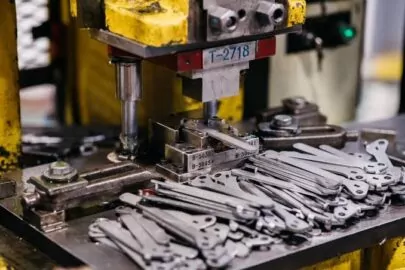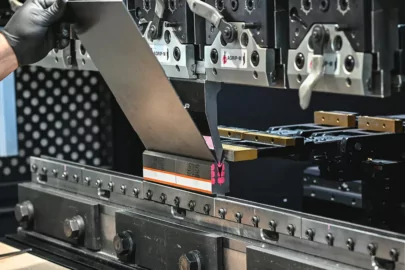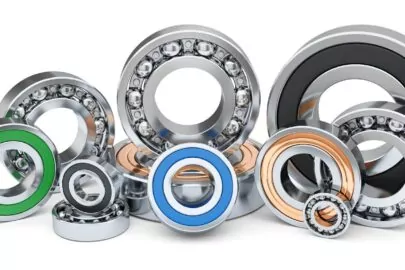Welding is a fundamental process in the fabrication and manufacturing industries, playing a crucial role in creating sturdy and durable assemblies. Among the various welding techniques, spot welding and tack welding are commonly used but often misunderstood.
Regardless of whether you’re a skilled expert or just starting out, learning the differences between spot welding and tack welding can greatly improve your metalworking proficiency and understanding.

This article explores the details of spot welding and tack welding, highlighting their features, benefits, and drawbacks to help you decide which method best fits your needs.
Let’s embark on this spot weld vs tack weld journey together!
What is Spot Weld?

Spot welding, also known as resistance spot welding, is a widely used welding method, primarily in the automotive and manufacturing sectors. It is a process in which two or more metal sheets are joined together at specific points by applying pressure and passing an electric current through the metal at those points. This causes localized fusion of the metal, creating a weld at each spot where the current is applied. This technique is highly efficient for mass production and is favored for its speed and simplicity.
Features
- Process Simplicity: Spot welding is known for its straightforward approach. The process involves placing the metal sheets between two copper electrodes. The electrodes press together and pass a high electric current through the metal, generating heat due to the metal’s resistance to the electric flow. This heat melts the metal at the contact points, forming a weld upon cooling. The simplicity of this process makes it easy to implement and automate.
- Equipment: Spot welding equipment includes a power supply, electrodes, and a welding machine. The machine can range from handheld units for small-scale applications to large robotic systems for industrial use. The electrodes, usually made of copper, are crucial as they conduct the electric current and apply the necessary pressure. The power supply provides the high current required for the welding process.
- Material Compatibility: Spot welding is most effective with conductive metals such as steel and aluminum. The process works best with low to medium carbon steels, which are commonly used in the automotive industry. However, it is less effective with non-conductive or highly resistant materials, such as certain high-carbon steels and some alloys, which can pose challenges due to their thermal and electrical properties.
- Automation: Spot welding can be easily integrated into automated systems, which is why it is extensively used in the automotive industry for assembling car bodies. Automation enhances the precision and repeatability of the welds, ensuring consistent quality across large batches of products. Robotic spot welding systems are capable of performing sophisticated welding tasks with precision and speed.
- Strength: The strength of a spot weld depends on several factors, including the size of the weld, the material properties, and the welding parameters. Properly executed spot welds can be very strong and are capable of withstanding considerable loads. However, the strength is localized to the weld spot, which requires precise control to ensure optimal performance.
Pros

- High Efficiency: Spot welding is one of the fastest welding processes available, making it suitable for mass production. The rapid cycle times allow manufacturers to produce large quantities of welded components quickly and efficiently.
- Cost-Effective: Due to its speed and simplicity, spot welding is cost-effective, especially for large-scale manufacturing. The reduction in labor costs and time savings contribute to overall cost efficiency.
- Consistent Quality: When properly controlled, spot welding produces consistent and reliable welds. The automated nature of the process ensures that each weld is made under the same conditions, resulting in uniform quality.
- Minimal Filler Material: Spot welding does not require additional filler materials, which reduces costs and simplifies the process. The absence of filler materials also means there are fewer variables to control, further enhancing the consistency of the welds.
- Automation Capability: Spot welding is highly compatible with robotic automation, enhancing productivity and precision in manufacturing. Automated systems can perform complex welding tasks with high repeatability, reducing the likelihood of human error.
- Clean Process: Spot welding produces minimal fumes and spatter, resulting in a cleaner work environment. This minimizes the necessity for extensive post-weld cleanup and improves safety for the operators.
- Strong Joints: Properly executed spot welds can create very strong joints, especially in sheet metal applications. The strength of the weld is sufficient for many structural applications, making it a reliable choice for various industries.
Cons
- Limited Material Thickness: Spot welding is most effective for thinner materials, typically up to 3 mm thick. It is less suitable for thick materials, whereas other welding methods, like MIG or TIG welding, may be more appropriate. The process’s effectiveness diminishes with increasing material thickness due to the difficulty in generating sufficient heat for proper fusion.
- Equipment Cost: The initial investment in spot welding equipment can be high, particularly for automated systems. While the long-term savings in labor and efficiency can offset this cost, the upfront expenditure can be a barrier for small-scale operations or startups.
- Surface Damage: The process can cause surface damage or indentations on the welded materials. The pressure exerted by the electrodes can leave marks on the surface, which may require additional finishing work to smooth out. This is particularly concerning for applications where surface appearance is critical.
- Electrical Hazards: The use of high electrical currents poses safety risks, requiring proper training and safety measures. Operators need to be trained to safely handle the equipment and to implement appropriate safety protocols to prevent accidents.
- Heat-Affected Zone: The localized heat generated during spot welding can alter the properties of the metal in the heat-affected zone. This can lead to changes in hardness, ductility, and other mechanical properties, potentially weakening the material around the weld. Proper control of the welding parameters is essential to minimize these effects.
- Limited Joint Types: Spot welding is primarily used for lap joints, where the edges of two sheets overlap. It is not suitable for other joint configurations, such as butt joints or T-joints, limiting its applicability in some scenarios.
- Material Restrictions: While spot welding is effective for certain metals like low-carbon steel and aluminum, it is less suitable for high-carbon steels, stainless steels, and some exotic alloys. The thermal and electrical characteristics of these materials can complicate achieving consistent, high-quality welds.
What is Tack Weld?

Tack welding is a temporary welding technique used to hold parts together in the correct alignment before the final welding process. Tack welds are small, intermittent welds placed at strategic points that are decided using tack weld symbols on welding blueprints along the joint to keep the components from shifting during subsequent welding operations.
While not intended to be structural or load-bearing, Tack welds are essential for maintaining the accuracy and stability of the final assembly. This technique is widely used in various industries, from automotive to construction, where precise alignment and stability of components are essential before performing the final, more robust welds.
Features
- Temporary Joint: Tack welds are designed to be temporary and are used primarily to hold parts together during the fabrication process. These small welds keep the components in place until the final, more substantial welds can be made. Once the final welding is complete, the tack welds often become part of the overall weld, but their primary purpose is alignment and stabilization.
- Small Welds: Tack welds are typically small and spaced out along the joint. The size and spacing depend on the material, the type of joint, and the requirements of the final weld. They are just large enough to hold the parts together but small enough to be quickly and easily made.
- Manual and Automated Application: Tack welding can be performed manually using various welding techniques, including MIG, TIG, and stick welding. It can also be incorporated into automated welding systems, particularly in high-volume manufacturing environments where precision and repeatability are critical.
- Versatility: Tack welding is a versatile technique that can be used with different welding processes and a range of materials, such as metals like steel, aluminum, and stainless steel. It is appropriate for a broad spectrum of applications, from light fabrication work to heavy structural projects.
- Alignment Aid: One of the primary functions of tack welding is to maintain the proper alignment and positioning of the parts being welded. By securing the components with tack welds, welders can ensure that the final welds are made accurately and consistently, reducing the risk of misalignment and the need for rework.
- Heat Management: Tack welding generates less heat compared to full welds, which helps minimize the risk of warping and distortion in the materials. This is particularly important when working with thin or heat-sensitive materials that can easily deform under excessive heat.
Pros

- Precise Alignment: Tack welding ensures precise alignment of parts, which is crucial for high-quality final welds. By securing the components in the correct position, tack welds help prevent misalignment and ensure that the final welds are made accurately.
- Reduced Distortion: By minimizing heat input, tack welding reduces the risk of warping and distortion. This is particularly advantageous when dealing with thin or heat-sensitive materials that are prone to deform under excessive heat.
- Time Efficiency: Tack welding is quick and efficient, allowing for rapid assembly and alignment. The small size and short duration of tack welds make them fast to apply, speeding up the overall fabrication process.
- Versatility: Tack welding can be used with various materials and welding processes, making it adaptable to different applications. Whether working with steel, aluminum, or other metals, tack welding provides a flexible solution for temporary joining.
- Cost-Effective: Tack welding is cost-effective, requiring minimal materials and equipment. The simplicity and speed of the process reduce labor costs and increase productivity, making it an economical choice for many applications.
- Safety: The process generates less heat and fumes compared to full welds, making it safer for the operator. The reduced heat input lowers the risk of burns and other heat-related injuries, while the minimal fume production improves air quality in the workspace.
Cons
- Not a Final Solution: Tack welds are not meant to be permanent and require follow-up welding for strength. They are temporary by nature and do not provide the structural integrity needed for load-bearing or final applications.
- Weak Joints: Tack welds are not strong enough to withstand significant loads or stresses. They are designed to hold parts in place temporarily and should not be relied upon for long-term strength or durability.
- Potential for Cracking: Improperly applied tack welds can crack or fail during the final welding process. If the tack welds are too small, poorly placed, or subjected to excessive stress, they can break, compromising the alignment and stability of the components.
- Inspection: Detecting defects in tack welds can be challenging without proper inspection methods. While visual inspection can identify obvious issues, more subtle defects may require advanced techniques such as ultrasonic testing or X-ray inspection to detect.
- Skill Requirement: While easier than some welding processes, tack welding still requires skill to ensure proper alignment and weld integrity. Inexperienced welders may struggle to apply tack welds correctly, leading to alignment issues or weak joints.
- Surface Preparation: Proper surface preparation is essential to ensure effective tack welds, which can add to the preparation time. Contaminants such as oil, rust, or paint can affect the quality of the tack welds, requiring thorough cleaning and preparation before welding.
- Limited Joint Types: While versatile, tack welding is primarily used for initial positioning and alignment, not for creating complex joint configurations. Other welding methods are often needed to complete the final assembly and provide the required structural strength.
Conclusion
Understanding the distinctions between spot weld vs tack weld is crucial for selecting the right technique for your project. Spot welding is ideal for high-volume, automated environments due to its speed and efficiency, while tack welding is essential for precise alignment and positioning before final welding. By evaluating the pros and cons, you can make informed decisions to achieve the best results in your welding projects.
For superior welding services and custom sheet metal fabrication, trust Zintilon. They excel in laser cutting, welding, and related technologies, offering professional and exceptional services with prompt lead times and competitive pricing. Submit your design files to Zintilon and receive a quote for outstanding sheet metal solutions.
Great, Together


